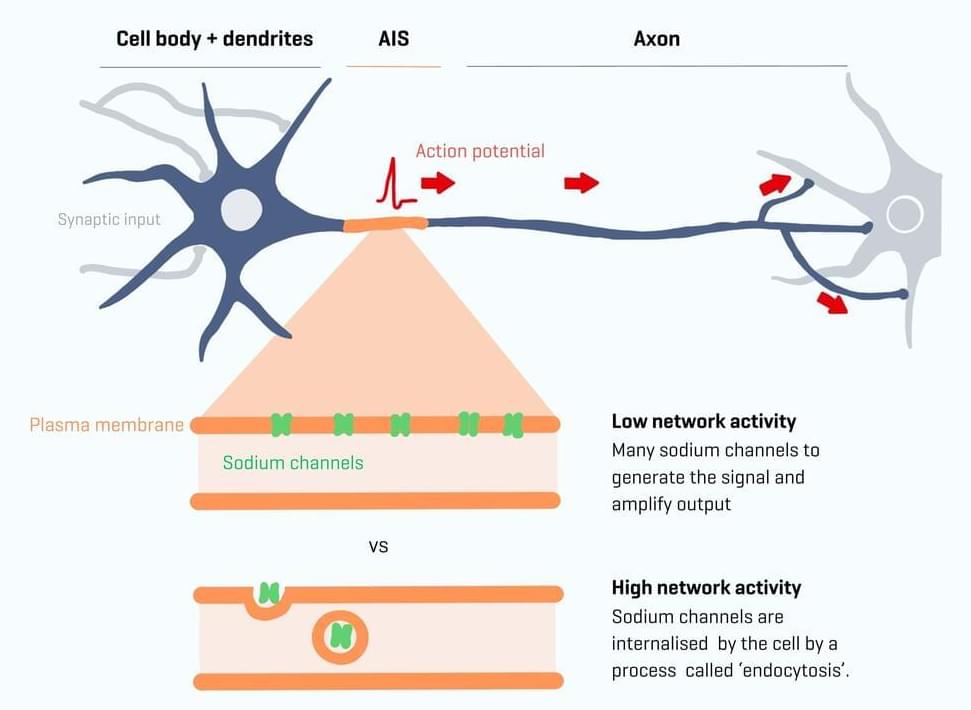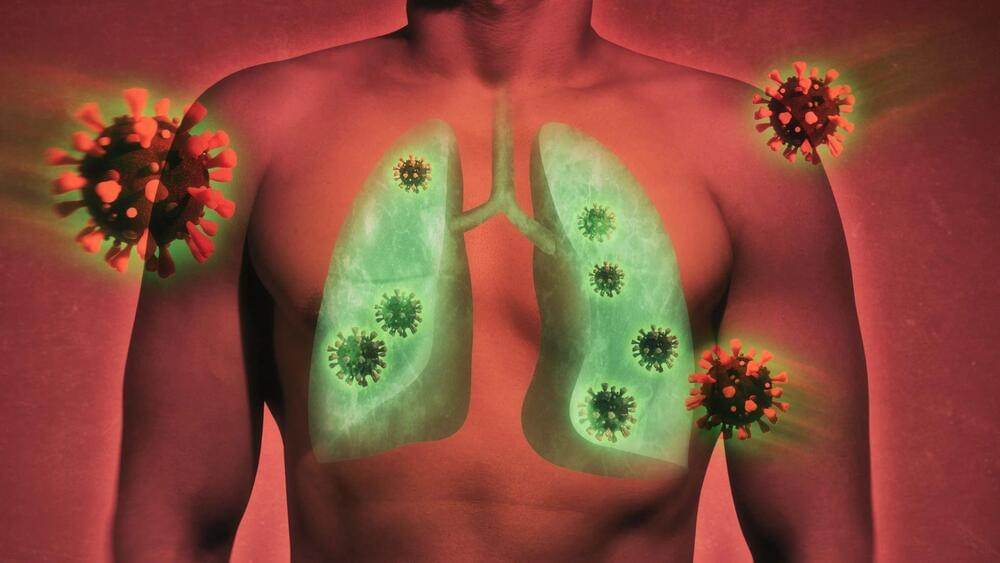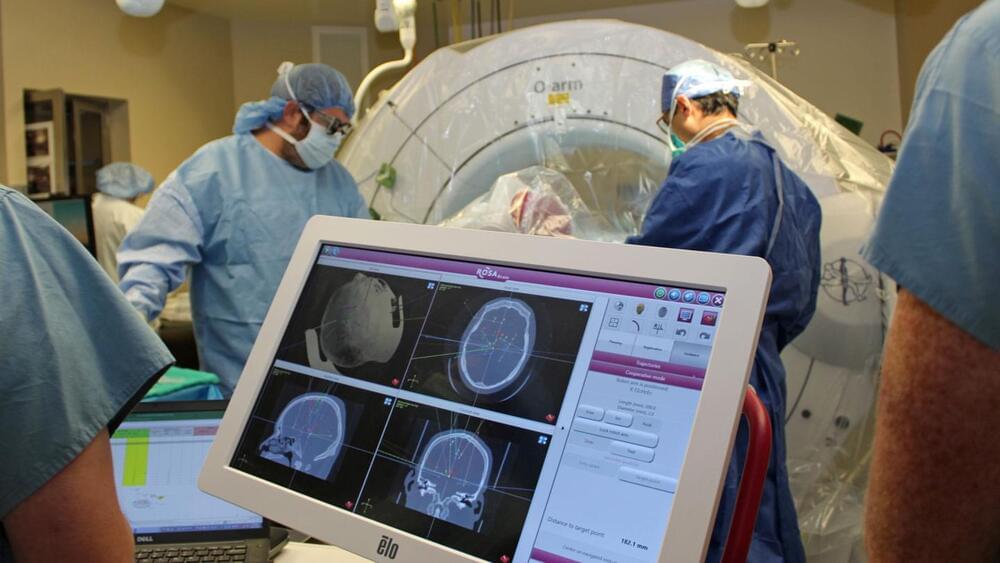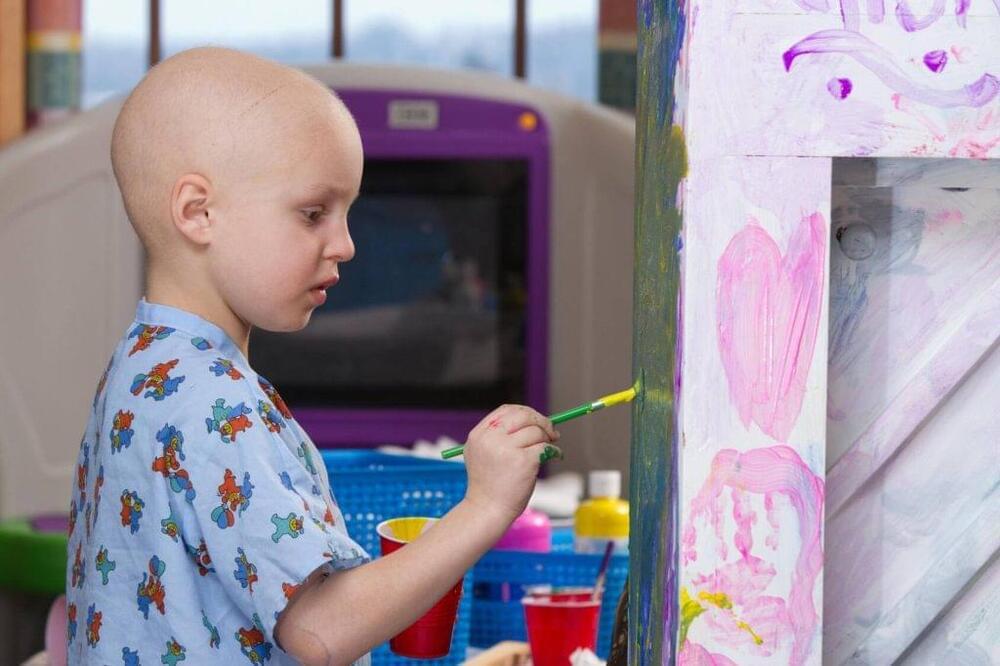Category: neuroscience – Page 528
Scientists regenerate neurons that restore walking in mice after paralysis from spinal cord injury
In a new study in mice, a team of researchers from UCLA, the Swiss Federal Institute of Technology, and Harvard University have uncovered a crucial component for restoring functional activity after spinal cord injury. The neuroscientists have shown that re-growing specific neurons back to their natural target regions led to recovery, while random regrowth was not effective.
In a 2018 study published in Nature, the team identified a treatment approach that triggers axons —the tiny fibers that link nerve cells and enable them to communicate—to regrow after spinal cord injury in rodents. But even as that approach successfully led to the regeneration of axons across severe spinal cord lesions, achieving functional recovery remained a significant challenge.
In a new study, published in Science, the team aimed to determine whether directing the regeneration of axons from specific neuronal subpopulations to their natural target regions could lead to meaningful functional restoration after spinal cord injury in mice. They first used advanced genetic analysis to identify nerve cell groups that enable walking improvement after a partial spinal cord injury.

The Fascinating Science of How We Think Not with the Brain But with the World
In The Extended Mind: The Power of Thinking Outside the Brain (public library), Annie Murphy Paul explores the most thrilling frontiers of this growing understanding, fusing a century of scientific studies with millennia of first-hand experience from the lives and letters of great artists, scientists, inventors, and entrepreneurs. Challenging our cultural inheritance of thinking that thinking takes place only inside the brain, she illuminates the myriad ways in which we “use the world to think” — from the sensemaking language of gestures that we acquire as babies long before we can speak concepts to the singular fuel that time in nature provides for the brain’s most powerful associative network.
Paul distills this recalibration of understanding:
Thinking outside the brain means skillfully engaging entities external to our heads — the feelings and movements of our bodies, the physical spaces in which we learn and work, and the minds of the other people around us — drawing them into our own mental processes. By reaching beyond the brain to recruit these “extra-neural” resources, we are able to focus more intently, comprehend more deeply, and create more imaginatively — to entertain ideas that would be literally unthinkable by the brain alone.

The fundamental process behind memory has been captured live
Researchers from the Netherlands Institute for Neuroscience have, for the first time, witnessed nerve plasticity in the axon in motion.
Our nerve cells communicate through rapid transmission of electrical signals known as action potentials. All action potentials in the brain start in one unique small area of the cell: the axon initial segment (AIS). This is the very first part of the axon, the long, thin extension of a nerve cell that transmits signals or impulses from one nerve cell to another. It acts as a control center where it is decided when an action potential is initiated before traveling further along the axon.
Previously, researchers made the surprising observation that plasticity also occurs at the AIS. Plasticity refers to the brain’s ability to create new connections and structures in order to scale the amount of electrical activity, which is crucial for learning and memory. AIS plasticity occurs during changes in brain network activity.

MRI reveals long-term organ abnormalities after COVID-19
COVID-19 can affect various organs in the body, such as the brain, lungs, heart, and kidneys. But what happens to these organs after the infection is over? How long does it take for them to heal? A new study has tried to answer these questions by using MRI scans to look at multiple organs of people hospitalized with COVID-19.
The study, published in The Lancet Respiratory Medicine, is one of the most comprehensive post–COVID–19 MRI studies to date. It involved 259 patients who had been hospitalized with COVID-19 in the U.K. and 50 people who had never been… More.
Credits: SvetaZi/iStock.


The science behind deep brain stimulation for depression
This is the third part in a series on deep brain stimulation for depression. Read from the beginning.
Early in the morning on August 22, 2022, Jon’s medical team told him that neurologist Helen Mayberg would check in with him just before his deep brain stimulation surgery.

Terrible Things Happened to Monkeys After Getting Neuralink Implants, According to Veterinary Records
This isn’t good. I feel for anyone in the human trials.
Documents viewed as part of a new investigation by Wired, however, as well as testimony from a former employee, contradict Musk’s claims entirely — and the details are as upsetting as they are damning, adding to a mounting case against the safety of Neuralink’s devices.
And the timing couldn’t be more exigent either, with Neuralink announcing on Wednesday that it’s recruiting subjects for human trials.
Here’s the harrowing casualty report, per veterinary records obtained by Wired from the California National Primate Research Center (CNPRC) at UC Davis, the site of the Neuralink primate research. Up to a dozen monkeys suffered grisly fates after receiving a Neuralink implant, including brain swelling and partial paralysis.

Consumer Health: What do you know about these 3 childhood cancers?
The types of cancer that occur in children often are different from those in adults. Childhood cancers usually are not linked to lifestyle or environmental risk factors, as is often the case in adults. Nonetheless, cancer is the second-leading cause of death in children 1 to 14 years old, according to the American Cancer Society. Nearly 10,000 children in the U.S. under the age of 15 will be diagnosed with cancer in 2023, and about 1,000 children are expected to die of the disease.
September is Childhood Cancer Awareness Month, which makes this a good time to learn about three of the most common types of cancer in children: acute lymphocytic leukemia, neuroblastoma and pediatric brain tumors.
Acute lymphocytic leukemia is a cancer of the blood and bone marrow. It’s the most common type of cancer in children, and treatments result in a good chance for a cure. Acute lymphocytic leukemia also can occur in adults, though the chance of a cure is greatly reduced.

Jellyfish shown to learn from past experience for the first time
Jellyfish are more advanced than once thought. A new study from the University of Copenhagen has demonstrated that Caribbean box jellyfish can learn at a much more complex level than ever imagined—despite only having one thousand nerve cells and no centralized brain. The finding changes our fundamental understanding of the brain and could enlighten us about our own mysterious brains.
After more than 500 million years on Earth, the immense evolutionary success of jellyfish is undeniable. Still, we’ve always thought of them as simple creatures with very limited learning abilities.
The prevailing opinion is that more advanced nervous systems equate with more advanced learning potential in animals. Jellyfish and their relatives, collectively known as cnidarians, are considered to be the earliest living animals to develop nervous systems and to have fairly simple nervous systems and no centralized brain.